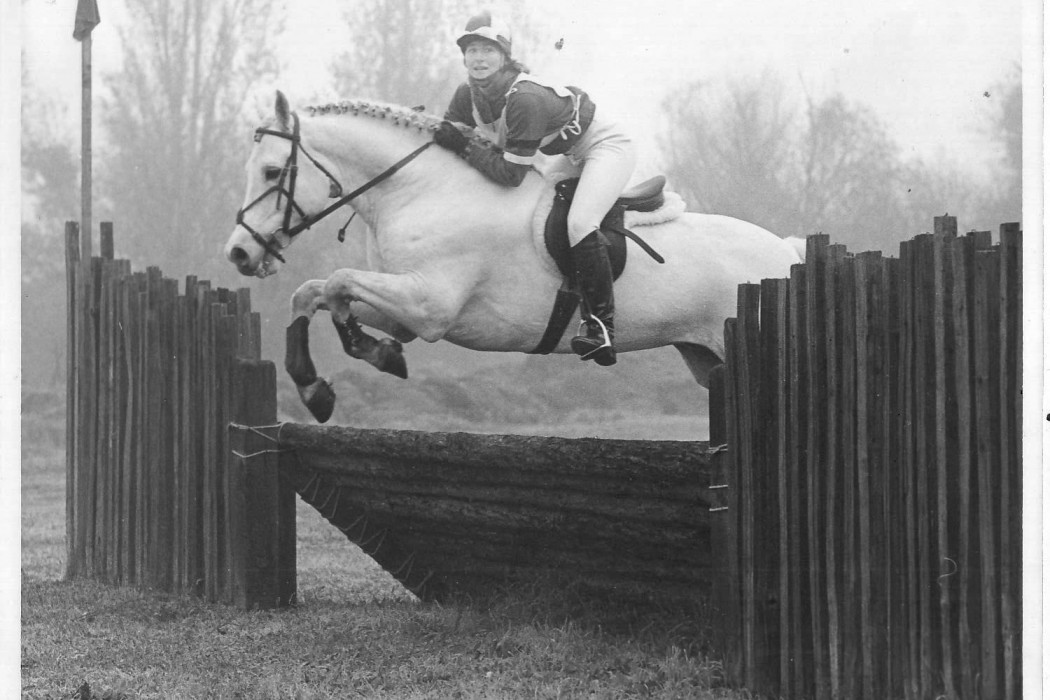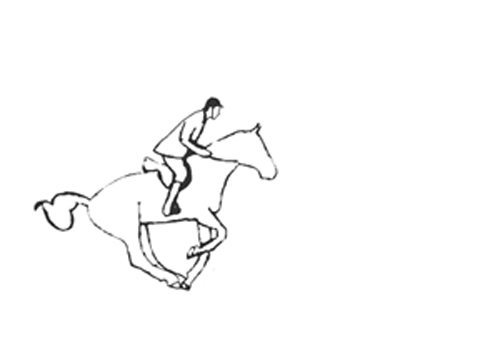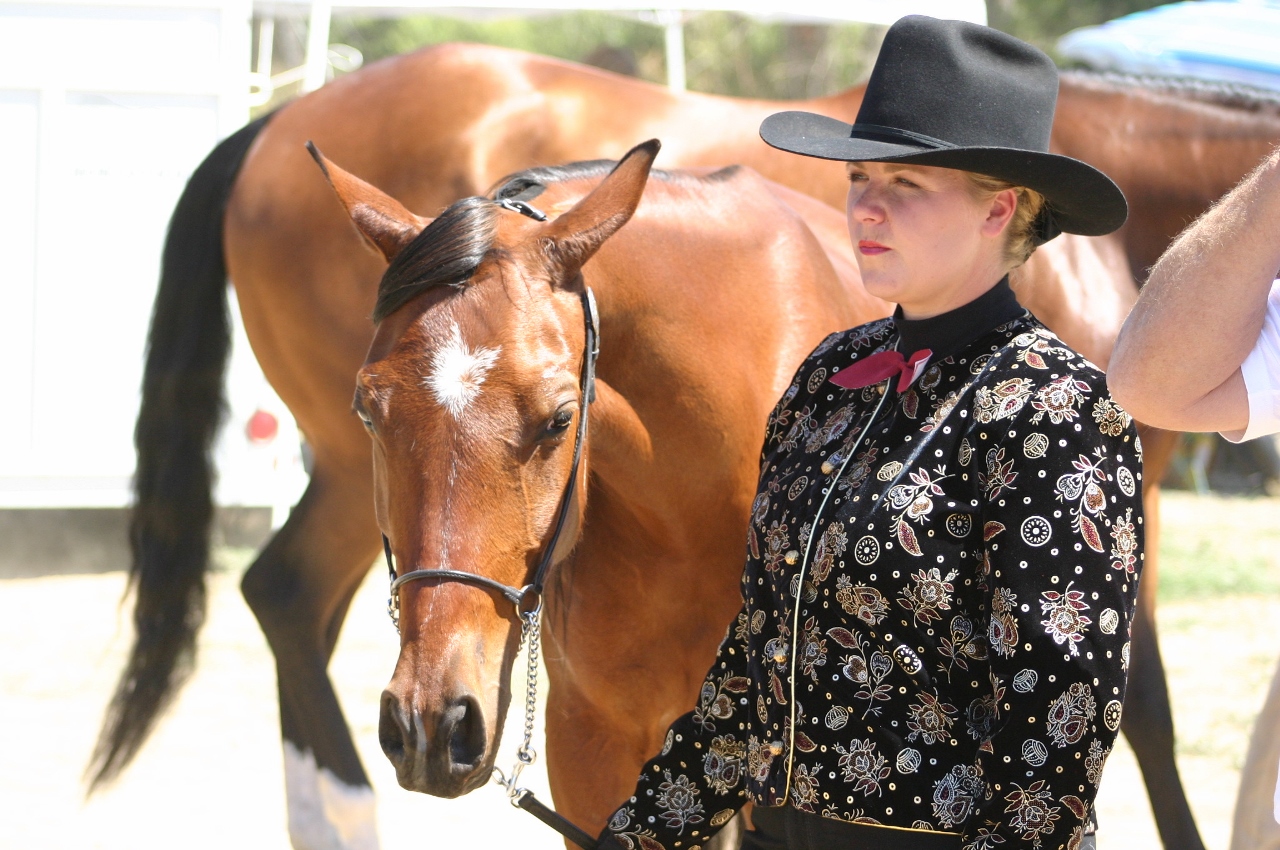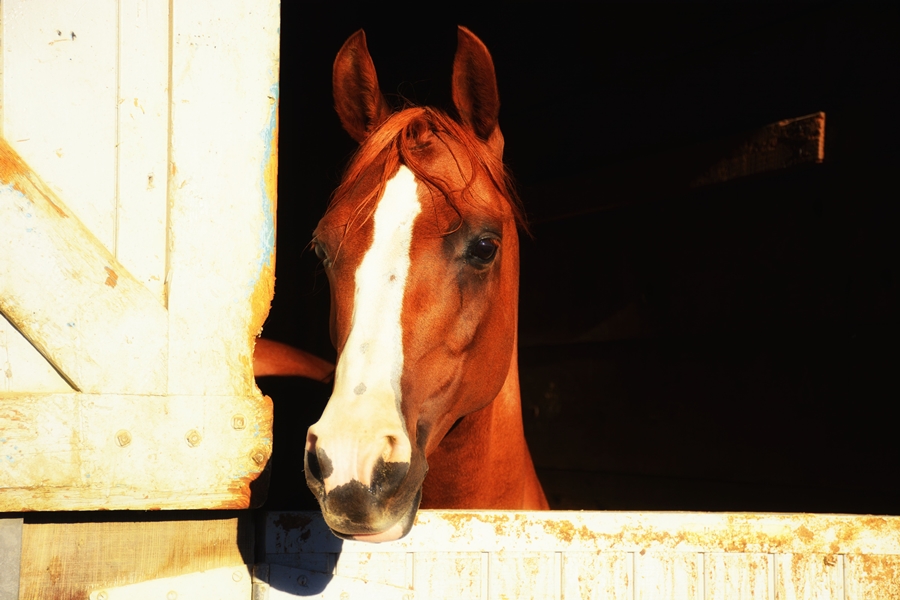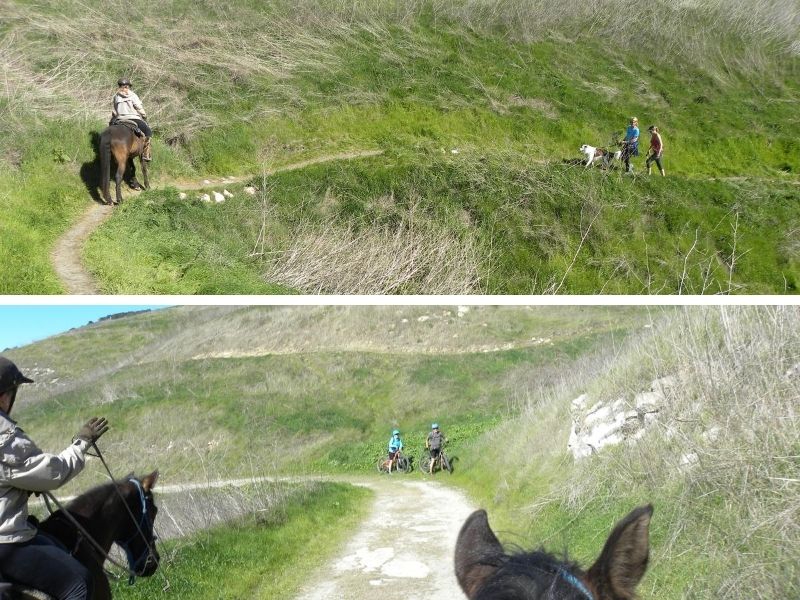Heels down, head up, look over the fence…
Where you look is where you land. Whether you’re galloping over cross-country fences, jumping ditches or water on the trail, or sailing over verticals and oxers in an arena, your eyes and head drive you and your horse over whatever obstacle is in front of you; this is the best way to transmit confidence to your horse as you move forward.
Why is Looking Up so Important?
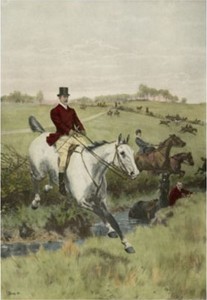 Let’s consider how the horse is built, and what happens to the center of gravity when he launches himself – and his rider – over a fence. Over 60% of the horse’s body weight is on the forehand, therefore his center of balance is over the withers. Old fox hunting photos show riders jumping obstacles behind the motion, with their legs forward and their bodies leaning back.
Let’s consider how the horse is built, and what happens to the center of gravity when he launches himself – and his rider – over a fence. Over 60% of the horse’s body weight is on the forehand, therefore his center of balance is over the withers. Old fox hunting photos show riders jumping obstacles behind the motion, with their legs forward and their bodies leaning back.
The idea of the rider leaning forward (into the two-point position) while going over a fence was something that we can thank an Italian known as Captain Caprilli for, as he discovered that putting your own body more into the horse’s gravity center (thus leaning forward with the motion) is a safer and more comfortable way to jump. His technique was laughed at in the beginning . . .
The Bascule
The horse forms and arc known as a “bascule” over a fence. Ideally, the highest point of the bascule will be over the center of the fence, and therefore, we as the rider, need to join the horse and place our upper body and head forward with the motion as the horse bascules. This is accomplished in the two-point or “jumping position”, with our heads up, our eyes fixed over the fence, and our hands giving as the horse stretches his neck.
Our head is heavy and the horse feels this weight when we look down. In fact, keeping the head up and the eyes fixed forward and into the distance is a concept that is helpful with many equine activities and disciplines, including reining, rail work, trail, barrel racing, etc. The moment that we look down and lose our point of focus, our horse feels this; his dynamic forward motion is impeded and he loses his sense of direction.
In The Beginning
Beginner riders, who either lack trust in their mounts or who fall victim to the natural curiosity of needing to “watch” the neck and head of the horse as they ride, will find themselves having trouble with all manner of things (leads, straight lines, speed control, headsets, etc.) just because they are not keeping their heads up and eyes fixed forward.
One of the most commonly heard phrases during lessons when I was in my early Pony Club career was, “where you look is where you land” and I passed this knowledge on to my early Pony Club pupils. I would help the Pony Clubbers “see” this by putting myself on the back side of a small crossbar or series of cavaletti’s and hold up my fingers for the riders to count. This helped them to get their focus up and over.
Technique for Getting a Rider to Look Up
Today, I use the same technique when teaching a new student to steer his or her horse in a simple walk pattern in an arena. I stand in front of the pair and hold up fingers, helping the rider see how to direct his or her horse. If the horse does not sense any purpose in the rider, he will decide for himself where to go. In the case of working with kids at Ag Adventure Camp, that place is straight to the eating area. If we don’t catch this soon enough, we find a rider with reins snatched from hands and a horse happily munching hay with no intention of returning to “work”. I gather up the rider’s reins, get the horse and rider turned around, and say, “If you don’t do the looking, your horse will do it for you”.
Head Position is Key to Successful Riding
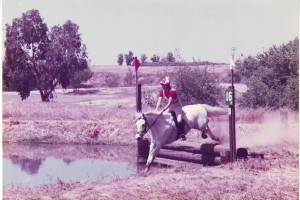 Head position and eye focus are key to driving and directing the horse as we ride. Our riding effectiveness greatly increases when we discipline ourselves to look up, over and through to where we are going. When you’re coming up to a jump, if you look down, your horse will lose impulsion, he won’t jump as high or as far, and you may even end up on the ground.
Head position and eye focus are key to driving and directing the horse as we ride. Our riding effectiveness greatly increases when we discipline ourselves to look up, over and through to where we are going. When you’re coming up to a jump, if you look down, your horse will lose impulsion, he won’t jump as high or as far, and you may even end up on the ground.
So, remember these two things… “Where you look is where you land” and “If you don’t do the looking, your horse will do it for you”!

